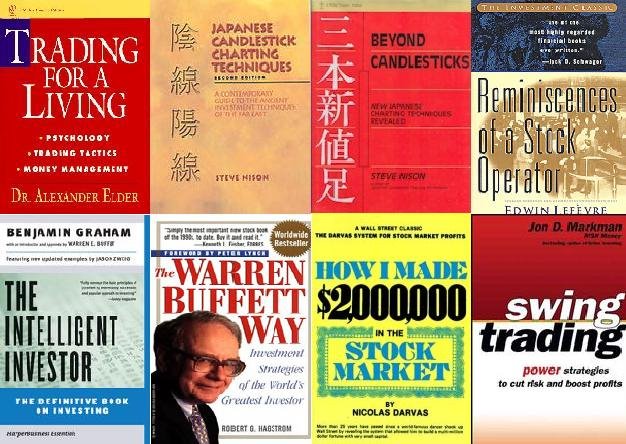
Very often we hear the scream of "Doji, doji, doji!" as if it is the end of the world. Or it could be the beginning of sunshine. Depends on the prior trend. But how valid is this excitement?
Let us dwell deeper into this mysterious Doji.
Doji is often touted as the reversal signal. If the prior trend is an uptrend, an appearance of doji to many, signals reversals. Correction is about to ensue.
I would define doji in another fashion. A doji to me merely means neither bulls nor bears are in control. You may view it as uncertainty. If there was a prior trend, it indicates that the trend has hit a pause. It may turn into a reversal or a resumption of uptrend. By looking at only the Doji, we will not know what will happen next. Types of Doji, such as, long-legged Doji, Gravestone Doji, Morning Star Doji, may give an additional strength to the Doji but not conclusive.
There are several categories of Doji. Classification is not mainstream but the idea is. Simply said, the idea is not new and have always been there. I merely simply give these doji names :P
1. Useless Doji
Refer to the chart above. There are so many of them. Is there a meaning to these doji?
Yes, the meaning is these are Useless Doji.
2. Pausing Doji (or commonly known as Failed Doji)
Refer to the chart below. The doji merely create a pause. It does not reverse the previous trend. See how dangerous it is to conclude it is a reversal just based on Doji?
Commonly known also as failed Doji, but personally I dislike the name. It gives a false impression as if a Doji is equivalent to an advance warning of a sure reversal.
3. Reversal Doji
Refer to the chart above. This doji became a reversal. The end of the era of uptrend.

So, how do we differentiate these doji? How do we know which is which? Useless doji are clear cut. But how are we to differentiate the Pausing Doji or the Reversal Doji?
In candlestick study, we always stress on the importance of confirmation. If it is not confirmed, then it is very risky. A Doji could either be a Reversal Doji or a Pausing Doji.
Another method is to gauge the likelihood of whether the Doji is a Reversal Doji. This can be done via the analysis of the position of the Doji. The idea behind this is to combine Doji with Key Resistance/Support.
Say a stock has been on a downtrend for sometime. A Doji appeared at the Key Support area. This is not conclusive, but it greatly enhances the probability that a reversal may be on the way.
There is also another way of interpreting the Doji, and that is via a combination of other methods. Suggested method is via Indicators. We'll cover more on indicators later.
Till then, I hope that Doji alone would be seen as a mere pause that neither bulls nor bears are in control. Nothing more, nothing less. Unless there are other information.



6 comments:
Walau eh... like this very difficult le.. how do we do confirmation? we wait for the next day's performance?
Yes. That is what we call confirmation. Confirmation may not be the next day movement though.
A doji simply means that the bulls and the bears are evenly matched at the end of the day.
Hi Maxforce,
Nice write-up on the Doji - I like your categorization between Useless Doji, Pausing Doji and Reversal Doji. Sounds more practical!
What are your thoughts on the significance of high vs low volume on the Doji day. For example, if there is a huge volume on the Doji day, does that increases the odds that a reversal is about to happen, especially when the prior trend is that volume has been increasing and possibly peaking also?
My observation is that Useless Doji tend to occur more often on a low volume day (or with an illiquid stock).
Exceptions of course do occur, but I would roughly speculate (?) that the odds are better than 50/50, that when we see a Doji on a "high" volume day, a reversal is more likely to happen.
Interestingly, apparently, the Japanese gives more significance on a Doji occuring at the end of an uptrend, against a Doji occuring at the end of a downtrend. Apparently, at the bottom, Reversal should not be assumed to happen, because the "weight" of the market might still push the prices down further. However, if it occurs at the top, the Japanese feels that it is safe to assume a reversal without further confirmation. It seems to me that this interpretation is more "kia su" i.e. better to be safe than sorry.
My comments are mostly based on what I've read from Candlesticks books, but I am still new to TA, and haven't really confirmed my own views with hundreds of actual Malaysian experience. Look forward to hearing your experience and comments.
Thanks.
Hi Seng,
Thanks for visiting :)
A high volume normally has an indication that something is brewing. Ultimately TA comes from price and volume. In many instances, the peak of a trend is marked with huge volume but not necessarily so. Eg. The KLCI has been trending upwards since last year. The volume kept increasing from below 1b. In this case, we can see that volume is also not conclusive.
The "meaningful correction" one such as the Feb 2007, could actually been identified via TA. There are at least 4 methods to do it.
1. Candlestick - via the exhaustive gaps, high volume and a bearish engulfing as a confirmation. This was used by a fellow bizfun forummer
2. Elliott Wave theory - this was calculated and approximated by another fellow bizfun forummer. The waves count need to be precise, and to count waves correctly, this is an immense task which require much experience.
3. Market breadth indicator - this method revolves around the market breadth theory - cash used to push up the CI is not limitless, hence this method will estimate the timing of when the cash would no longer be sufficient to maintain the market. This was used by another fellow bizfun forummer.
4. Indicators - this method was used by myself and though many do not see that indicators could be used for this method, I ve spent much blood and sweat to develop this.
All in all, they are not precise, an approximation only. TA can tell us roughly when the correction would happen, not exact timing.
Doji is only one of the possible tool to identify this reversal of a trend. Volume may help but not sufficient.
The starting of a new uptrend from a long period of consolidation is not so difficult to identify.
The reversal of a downtrend, based on my limited experience is a difficult part. To those who follow the chatboxes, you would have known that I called for a bull after the Feb massacre much later, though before the CI overcome the 1220 zone. This is something I need to work on. Experts have called for the resumption of the bull trend much earlier, about a week or so before myself. I believe that the possible methods used were candlestick, indicators and market breadth. I m still researching.
Also, perhaps fear is more difficult to overcome than greed. Maybe this is why it is easier to identify a top than a bottom.
I saw your posting in investlah.com. Came here to learn what is Doji. Very good explanation.
Post a Comment